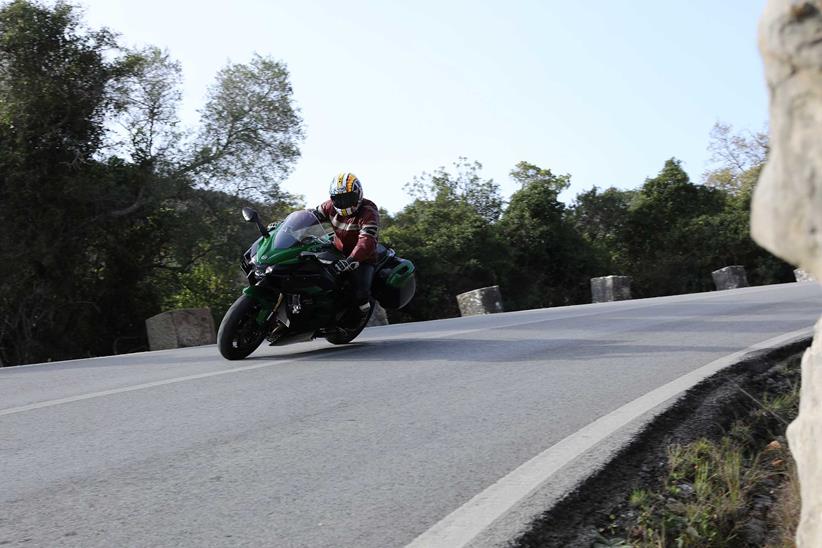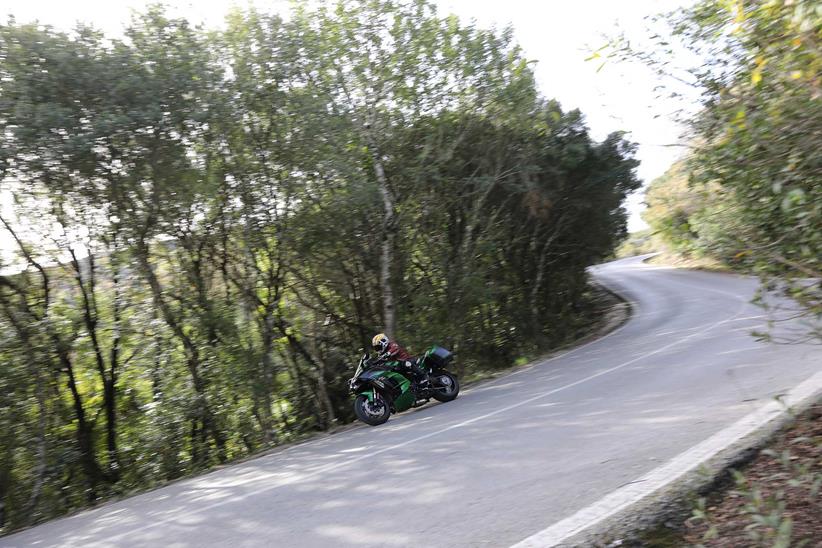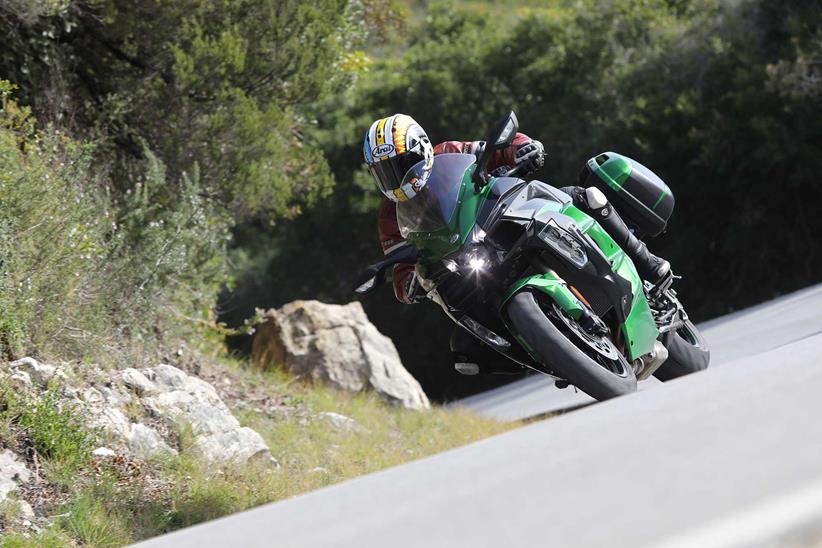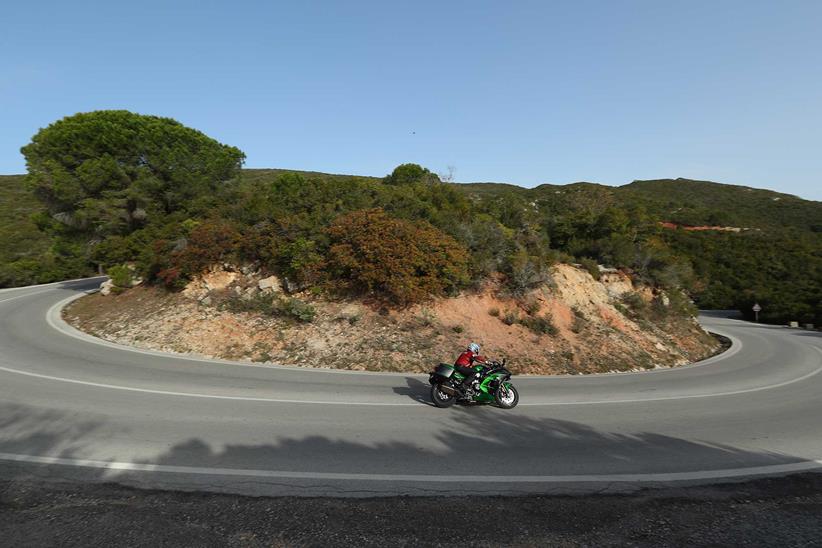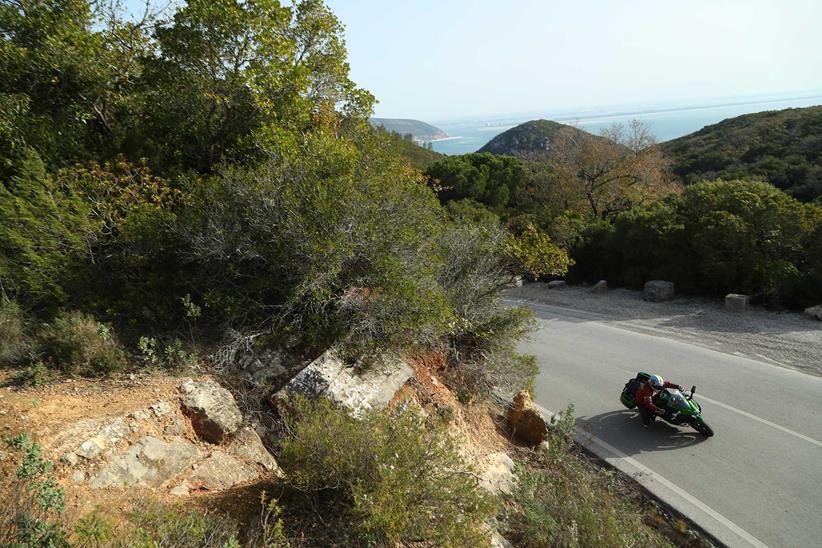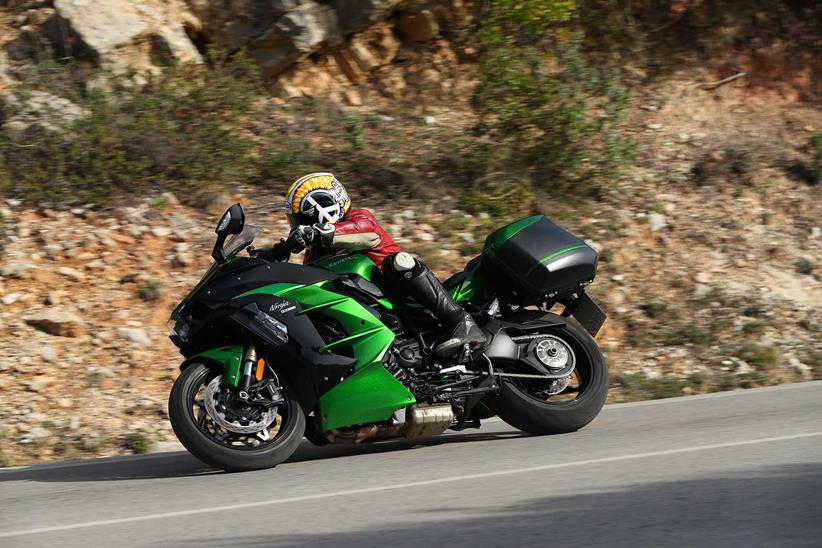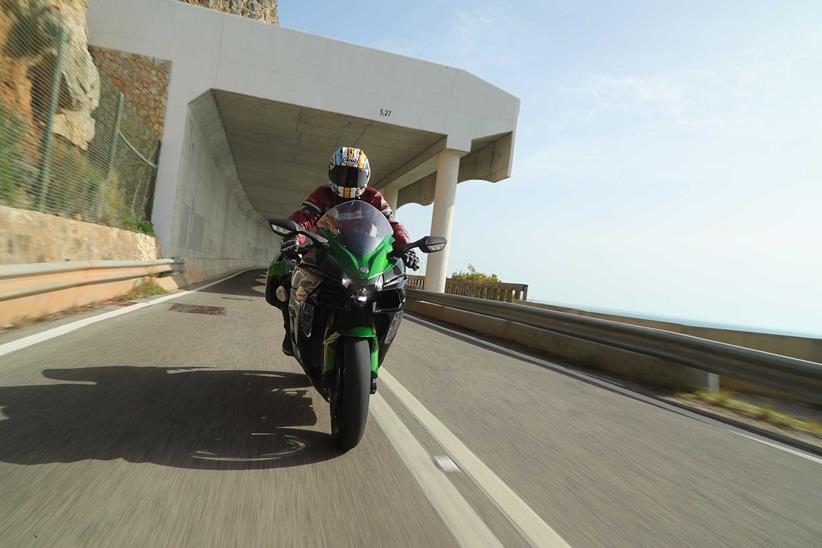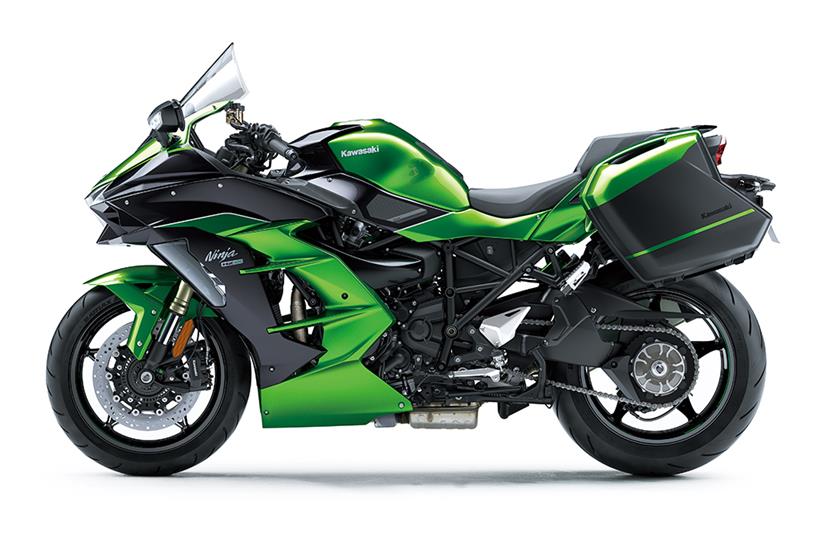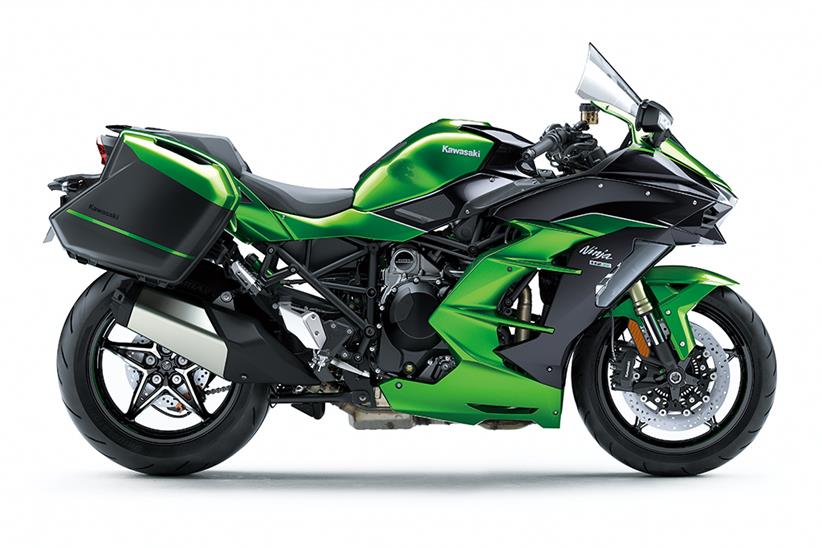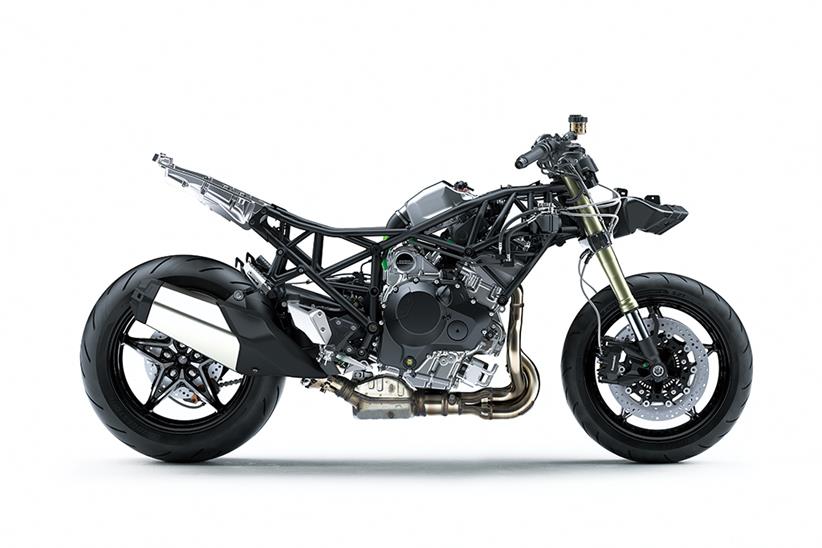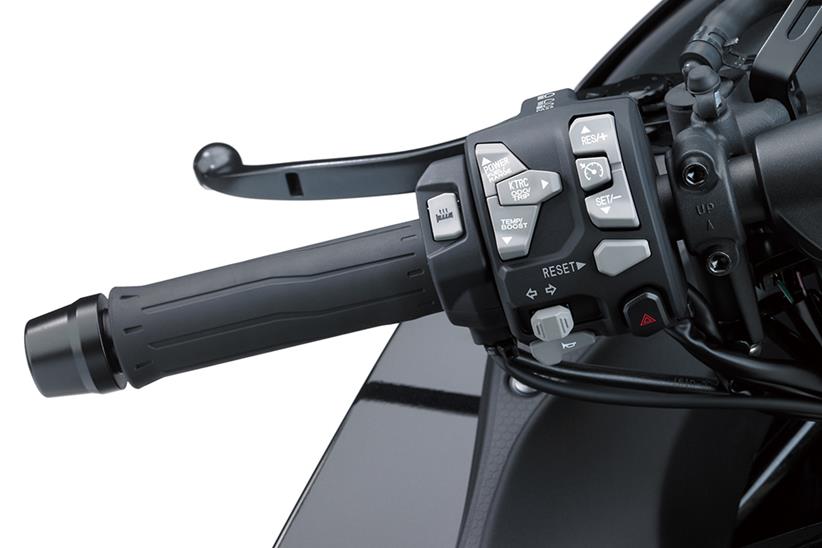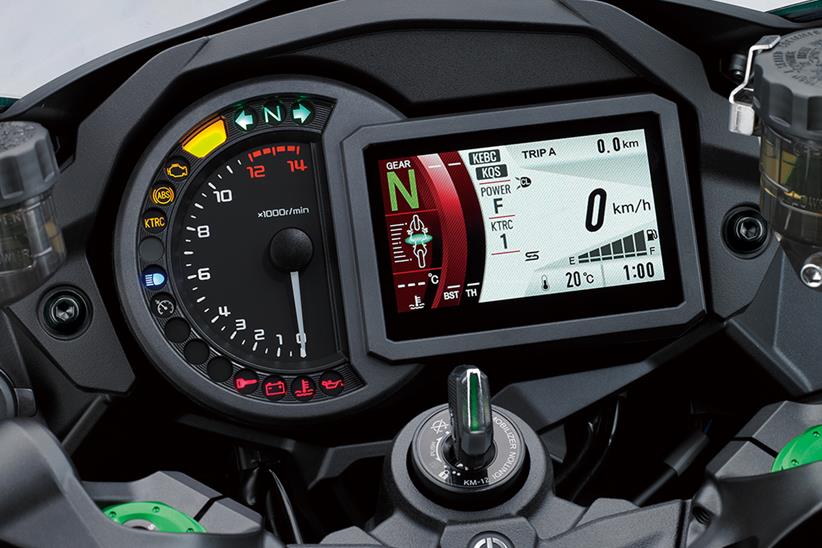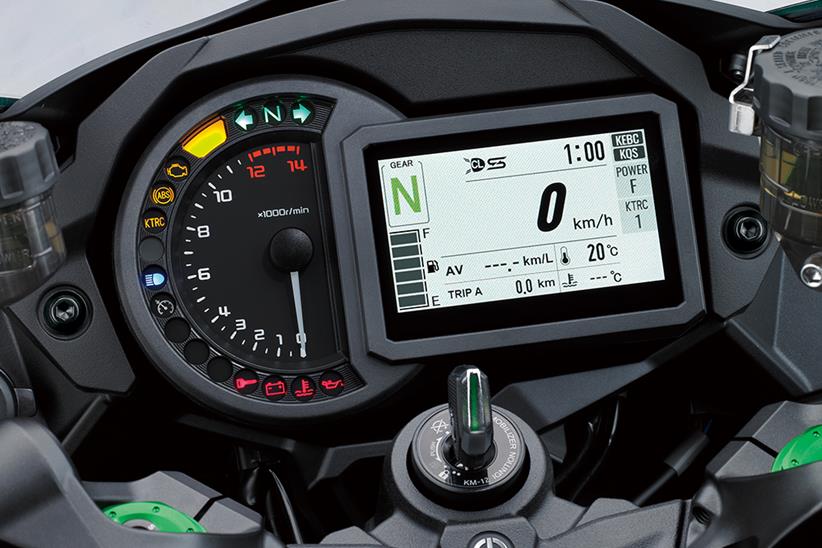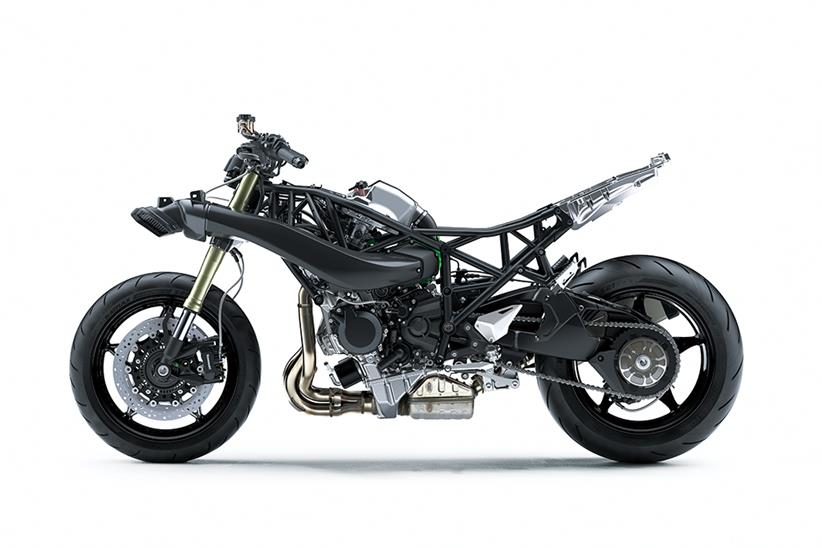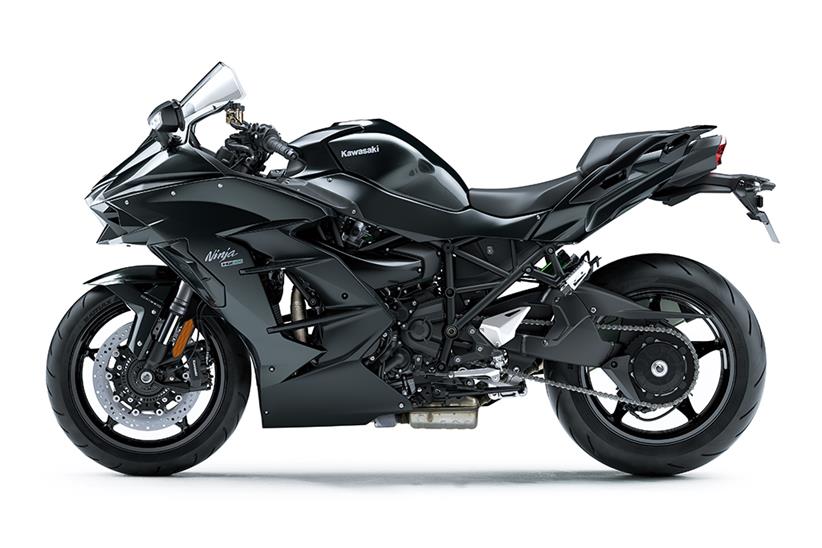Video: Kawasaki's supercharged SX appeal
Despite what its name might suggest, the H2 SX is neither a supercharged H2 with added panniers and screen nor the best-selling Z1000SX with the H2’s 197bhp engine wedged in. No, the H2 SX is much, much more than that.
So, for example, although the H2 SX’s tubular trellis frame is similar to that of the H2, its engine is mounted two inches further forward; its head stock is shallower and its wheelbase is extended (by 25mm) for added stability. There’s more: the frame tubing is thicker, plus the sub-frame has been strengthened to take a pillion plus luggage.
Engine-wise…
The H2 SX has the same 998cc capacity as the H2 and the crankcases are the same, but otherwise it’s an entirely new engine. Kawasaki refer to the H2 SX as the second generation of its supercharged engines, after the H2/H2R, and have striven to create what they call a ‘balanced supercharger’.
In other words, while with the H2 the primary goal was total performance, with this H2 SX Kawasaki are trying to balance performance and economy. As a result, the new engine has been designed to offer more low to mid-range power than the H2 while Kawasaki also claim similar mpg figures for the H2 SX to that of its already frugal Versys 1000.
Of course, power is nothing without control and, as with the H2, clever electronics abound. There are three switchable power modes, Full, Medium and Low, with the latter two reducing power to 75% and 50% respectively. The traction control system has three settings and is fully integrated into cornering ABS system.
There’s a quickshifter/auto-blipper, which negates the need for the clutch during gearshifts, and there’s even launch control.
That said, the suspension isn’t semi-active or electronically adjustable, as some were hoping, although both ends are fully-adjustable and there’s an easy-access remote preload knob at the rear.
The H2 SX’s bodywork, too, is all-new and, like the H2, features a huge induction snorkel down the left side. The large screen is all-new but isn’t adjustable. Due to the SX’s potentially ultra-high speeds Kawasaki wanted keep to keep its aerodynamics constant to maximise stability and strength.
The H2 SX’s cornering headlights are also a first for Kawasaki. Via a Bosch management system, three lights per side illuminate in relation to lean angle. Clocks and switchgear are also bespoke and based around another Kawasaki first – a central, full colour, TFT dash.
You can change the background colour and layout, while cruise control comes standard, as do heated grips.
In the flesh, of course, there’s no mistaking the H2’s influences: the H2 SX’s front-end is a doppleganger for its ground-breaking sibling while the rear has more than a few shades of Z1000SX. In fact, the newcomer’s optional panniers are almost identical to those of the SX.
But nor is there any hiding the fact Kawasaki’s latest and greatest is a substantial machine – an impression exaggerated by the front end’s width. That said, in this SE 260kg trim, the new H2 SX is actually 9kg lighter than Kawasaki’s ZZR1400. And although the supercharged machine’s seat height is higher than the Z1000SX, at just 5ft 6in, I’m comfortable with feet almost flat on both sides thanks to the narrow seat.
At slow speed, of course, you feel all that bulk – but it’s still easily manageable. With much of the weight carried low and forward in the chassis, there’s a nice, natural balance while the supercharged motor fuels and responds beautifully low down with little of the aggression of the H2.
However, as speeds increase, the fuelling does become a little snatchy. A large amount of town riding and commuting on our test highlighted the problem. The initial pick up isn’t bad, but when you close the throttle it feels like someone has cut the fuel line. Compared to the H2 it’s as smooth as a baby’s proverbial but after the ZZR1400 the new H2 SX is more than a little harsh.
The quickshifter wasn’t as smooth as expected, either, proving occasionally notchy on downshifts and not delivering the slick shifts I’d hoped for.
Once higher up the rev-band, this is less noticeable and is where you’ll spend the majority of your time. At 90-100mph, the analogue tacho hovers around 6000rpm in top, merely halfway to the 12,000rpm redline, at which point you may wish to activate the cruise control and enjoy the ride. And if you want to accelerate or de-accelerate slightly you can use the +/- buttons on the left bar.
At this sort of speed you notice that the H2 SX’s riding position is a halfway-house between Kawasaki’s ZZR1400 and Z1000SX. You’re not as upright as the Z1000, or as hunched over as the ZZR, while the large screen is ample, even for taller riders, and the heated grips are a welcome bonus.
The seat’s ample, too, both for rider and pillion. I spent all day in the saddle with no complaints. There’s plenty of legroom and the pegs aren’t set as far back as the ZZR’s. The full-colour dash has all the information you need and more besides, such as a boost gauge and lean angle graphic which lets you, after every journey, scroll back to check your maximum lean angle.
Kawasaki claim the new H2 SX is 25% more fuel efficient than the standard H2 and can cover over 200 miles between fill-ups from its 19-litre tank. In other words, just over two hours of comfortable touring…
Project Leader, Mr Hiroyuki Watanabe, told MCN: “The Ninja H2 SX is developed to be the fastest Sport Tourer on the Autobahn.” And I think he’s right. The SX’s power is instant. Once the chirping supercharger is spinning, the acceleration in any gear is spine tingling. But on road, and as a sports-tourer, there are other things to consider – and that’s where the H2 SX falls a little short.
However, I was never fully confi- dent with the feel from the front end. I don’t know if it was the cold condi- tions, the Bridgestone S21 rubber, or something about the bike’s geometry, but the front end always felt slightly vague and as a result I never had the confidence to throw the H2 SX on its ear. It’s not meant to be a sportsbike but I’d still prefer more feedback. On the road, the H2 SX is certainly more touring than sports. It will be interest- ing to see how it performs in the UK.
The H2 SX SE on track
On a race circuit, of course, it’s a different matter. We had the historic Estoril track in Portugal on day two to test the H2 SX’s performance and, in a word, it’s breathtaking. Twist the throttle to 100% and the launch control limits revs to just over 6000rpm. Dump the clutch, rely on the electronics, and you’re rewarded with idiot-proof, instant, scary, acceleration. From a standing start the H2 SX indicated 177mph. In under 1km.
In fact, the H2 SX’s acceleration is so rapid it’s an eye-opener even for experienced riders. So much so that, with the traction control switched off, it’s hard to keep the front wheel on the ground.
With a run onto the main straight I managed to squeeze out a little more: 181mph, and it was still pulling. At the end of the straight, stability was perfect despite very windy conditions.
The handling questions that arose on the road weren’t an issue on track. With heat in the tyres, and the suspension tweaked, the lack of front end feel wasn’t significant. On long, sweeping corners the H2 SX was unfazed and predictable. Ground clearance was impressive, as was the rear end grip, while the electronics do a remarkable job of dealing with so much power and make the power accessible. Yes, the H2 SX is certainly more tourer than sports, it doesn’t have the agility of the Z1000SX, but for a big comfortable bike it wasn’t fazed when asked to perform outside its design window on track.
How does the SX’s supercharged motor differ to the H2’s?
The H2 SX’s supercharged four may look and sound the same as the H2’s but it’s actually very different. Kawasaki claim the new motor is 25% more fuel efficient than the H2. So how? First, the supercharger’s impeller and intake system are new. Although the impeller is the same size, the shape and angle of the blades have changed. The intake chamber has been revised, as have the intake funnel lengths. Throttle valves are smaller, from 50mm to 40mm, and cam profiles now have a shorter intake and exhaust duration. Intake and exhaust ports are also revised.
The compression ratio has been significantly increased with new pistons. The higher compression significantly increases fuel efficiency.
The exhaust is all new, too, with smaller diameter header pipes and a shorter, more compact silencer, and as a result is 2kg lighter than the H2 item. The end result is: 207bhp with ram-air, improved low to mid-range power and 25% more fuel efficiency. And it still chirps.
MCN’s H2 SX verdict
The combination of useable supercharged power combined with comfort is genius. There is arguably no faster way to travel around Europe in comfort. Behind Kawasaki’s impractical H2, it’s king of the Autobahn. With heated grips, cruise control, cornering ABS and full colour clocks, it’s practical; yet at the same has the mid-range tyre-ripping grunt to take your breath away – love it.


